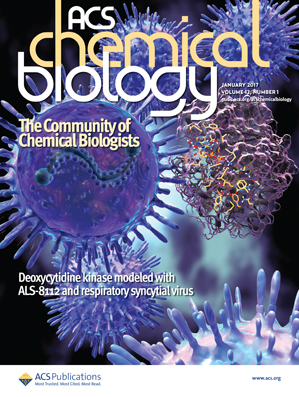Reconstructing long-term (1980–2022) daily ground particulate matter concentrations in India (LongPMInd)
IF 3.5
2区 生物学
Q2 BIOCHEMISTRY & MOLECULAR BIOLOGY
引用次数: 0
Abstract
Abstract. Severe airborne particulate matter (PM, including PM2.5 and PM10) pollution in India has caused widespread concern. Accurate PM concentrations are fundamental for scientific policymaking and health impact assessment, while surface observations in India are limited due to scarce sites and uneven distribution. In this work, a simple structured, efficient, and robust model based on the Light Gradient-Boosting Machine (LightGBM) was developed to fuse multisource data and estimate long-term (1980–2022) historical daily ground PM concentrations in India (LongPMInd). The LightGBM model shows good accuracy with out-of-sample, out-of-site, and out-of-year cross-validation (CV) test R2 values of 0.77, 0.70, and 0.66, respectively. Small performance gaps between PM2.5 training and testing (delta RMSE of 1.06, 3.83, and 7.74 µg m−3) indicate low overfitting risks. With great generalization ability, the openly accessible, long-term, and high-quality daily PM2.5 and PM10 products were then reconstructed (10 km, 1980–2022). This showed that India has experienced severe PM pollution in the Indo-Gangetic Plain (IGP), especially in winter. PM concentrations have significantly increased (p<0.05) in most regions since 2000 (0.34 µgm-3yr-1). The turning point occurred in 2018 when the Indian government launched the National Clean Air Programme, and PM2.5 concentrations declined in most regions (−0.78 µgm-3yr-1) during 2018–2022. Severe PM2.5 pollution caused continuous increased attributable premature mortalities, from 0.73 (95 % confidence interval (CI) [0.65, 0.80]) million in 2000 to 1.22 (95 % CI [1.03, 1.41]) million in 2019, particularly in the IGP, where attributable mortality increased from 0.36 million to 0.60 million. LongPMInd has the potential to support multiple applications of air quality management, public health initiatives, and efforts to address climate change. The daily and monthly PM2.5 and PM10 concentrations are publicly accessible at https://doi.org/10.5281/zenodo.10073944 (Wang et al., 2023a).重建印度长期(1980-2022 年)每日地面颗粒物浓度(LongPMInd)
摘要印度严重的空气颗粒物(PM,包括 PM2.5 和 PM10)污染引起了广泛关注。准确的可吸入颗粒物浓度是科学决策和健康影响评估的基础,而印度的地表观测由于站点稀少和分布不均而受到限制。在这项工作中,基于光梯度提升机(LightGBM)开发了一个结构简单、高效且稳健的模型,用于融合多源数据并估算印度(LongPMInd)长期(1980-2022 年)每日地面可吸入颗粒物历史浓度。LightGBM 模型显示出良好的准确性,样本外、现场外和年度外交叉验证 (CV) 测试 R2 值分别为 0.77、0.70 和 0.66。PM2.5 培训和测试之间的性能差距较小(delta RMSE 分别为 1.06、3.83 和 7.74 µg m-3),表明过拟合风险较低。凭借强大的泛化能力,我们重建了可公开获取的、长期的、高质量的每日 PM2.5 和 PM10 产品(10 km,1980-2022 年)。结果表明,印度的印度-甘肃平原(IGP)经历了严重的可吸入颗粒物污染,尤其是在冬季。自 2000 年(0.34 µgm-3yr-1)以来,大多数地区的 PM 浓度都明显增加(p<0.05)。转折点出现在 2018 年,当时印度政府启动了 "国家清洁空气计划",大部分地区的 PM2.5 浓度在 2018-2022 年期间有所下降(-0.78 µgm-3yr-1)。严重的 PM2.5 污染导致可归因的过早死亡率持续上升,从 2000 年的 0.73(95 % 置信区间 (CI) [0.65, 0.80])万上升到 2019 年的 122(95 % CI [1.03, 1.41])万,尤其是在 IGP,可归因的死亡率从 0.36 万上升到 0.60 万。LongPMInd 具有支持空气质量管理、公共卫生倡议和应对气候变化等多种应用的潜力。PM2.5和PM10的日浓度和月浓度可在https://doi.org/10.5281/zenodo.10073944(Wang等人,2023a)。
本文章由计算机程序翻译,如有差异,请以英文原文为准。
求助全文
约1分钟内获得全文
求助全文
来源期刊

ACS Chemical Biology
生物-生化与分子生物学
CiteScore
7.50
自引率
5.00%
发文量
353
审稿时长
3.3 months
期刊介绍:
ACS Chemical Biology provides an international forum for the rapid communication of research that broadly embraces the interface between chemistry and biology.
The journal also serves as a forum to facilitate the communication between biologists and chemists that will translate into new research opportunities and discoveries. Results will be published in which molecular reasoning has been used to probe questions through in vitro investigations, cell biological methods, or organismic studies.
We welcome mechanistic studies on proteins, nucleic acids, sugars, lipids, and nonbiological polymers. The journal serves a large scientific community, exploring cellular function from both chemical and biological perspectives. It is understood that submitted work is based upon original results and has not been published previously.
 求助内容:
求助内容: 应助结果提醒方式:
应助结果提醒方式:


